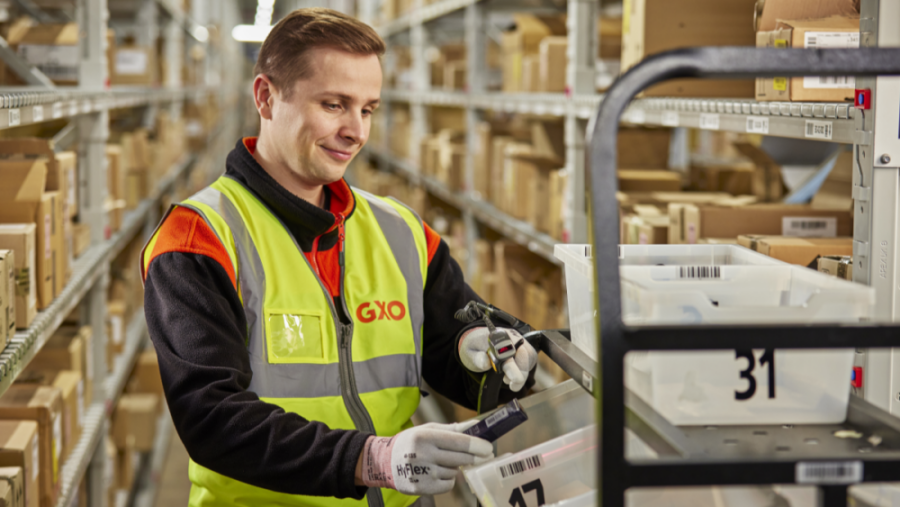
Countless business leaders will have had sleepless nights this year as they fret about problems such as economic volatility, transport disruption and cost inflation, especially in their firms’ supply chains.
There may be more insomnia to come as the crucial pre-Christmas retail period approaches, but they could gift themselves some peace of mind in one key area by tapping the potential of shared logistics.
The advantages of sharing
“We know that there’ll be business leaders lying in bed tonight wondering how to fix their supply chains.”
So says Tony Mannix, strategic adviser for retail logistics at GXO, which offers shared logistics services through GXO Direct. He notes that these leaders “may be wedded to the idea of dedicated logistics, with their own branded warehouses and vehicles. But, with increased fuel costs, the need to cut carbon emissions and unpredictable consumer demand making inventory planning harder, they can learn lessons from the shared economy.”
We know that there’ll be business leaders lying in bed tonight wondering how to fix their supply chains
Mannix has seen a growing appetite in sectors ranging from manufacturing to retail for shared logistics services such as warehousing and returns management.
“You can get shared facilities appropriate for your business type rather than a half-filled warehouse of your own,” he says. “You share resources, workforce management and knowledge with complementary businesses, while incurring fewer overheads.”
These facilities can be scaled up or down as demand fluctuates. Extra services, such as personalisation, can be added if necessary.
Companies needn’t be concerned about sacrificing brand identity for collaborative logistics, according to Mannix. “A business competes on its brand, not the supply chain behind it,” he argues. “Some firms worry that using a shared logistics service could cause a loss of identity, but it can combine the best of both worlds – the packaging and labelling are all brand-focused.”
The last mile
Shared logistics services can offer a core transport network, moving goods to clients’ outlets on the high street and beyond, or a connected service with parcel carriers for home delivery.
Click-and-collect services, such as GXO Clicklink, are another way a brand can set itself apart from its rivals in the age of convenience, Mannix notes.
“There are more click-and-collect volumes going into high street stores. While home delivery isn’t dead, customers want more flexibility and convenience as they return to the office. “Click and collect works for retailers too, because it means that people come into their stores more often.”
Mannix adds that GXO’s Clicklink network is strategically located to enable highly efficient distribution to shoppers seeking both fast and eco-friendly deliveries. The service’s capacity to distribute multiple orders to several outlets in a single vehicle load also offers greater cost-efficiency.
Dealing with returns
Faced with the high financial and environmental costs of handling unwanted purchases, many brands are reconsidering their returns procedures. A logistics partner offering returns management can provide smarter options for brands.
Mannix points out that a customer buying numerous variants of one item to try on at home might pick up their order and then wait several weeks to return the unwanted items from that parcel. This can make reselling returned stock difficult, especially if the season for those garments has passed.
To address this problem, he says, GXO Direct “can deliver items to stores instead of sending out parcels. On delivery, every item could be hung up in a changing room ready for the customer to try. Unwanted items can then quickly be made available to other shoppers or returned quickly via the Clicklink network. This is better for the environment and makes it easier for sales teams to interact with customers in store.”
Retailers are exploring other waste-cutting solutions for handling returns. Repair services might not seem an option for brands setting out on their own, but these can be accessed through a shared logistics provider. GXO ServiceTech runs such services for consumer electronics, with engineers embedded at sites.
“We can soon determine if a piece can be made factory-perfect again or it needs to be graded and sold out to secondary channels,” explains Mannix, who adds that such services can help firms achieve crucial efficiency savings as they enter the most important time of the retail year.
“Businesses really need help in November, December and beyond. We can onboard them to meet that Christmas rush,” Mannix says. “The logic of shared facilities is that the systems are already in place. We just need to make them appropriate for the customer.”
For more information, visit GXO.com/GXO-Direct or email sales.logisticsuk@gxo.com
